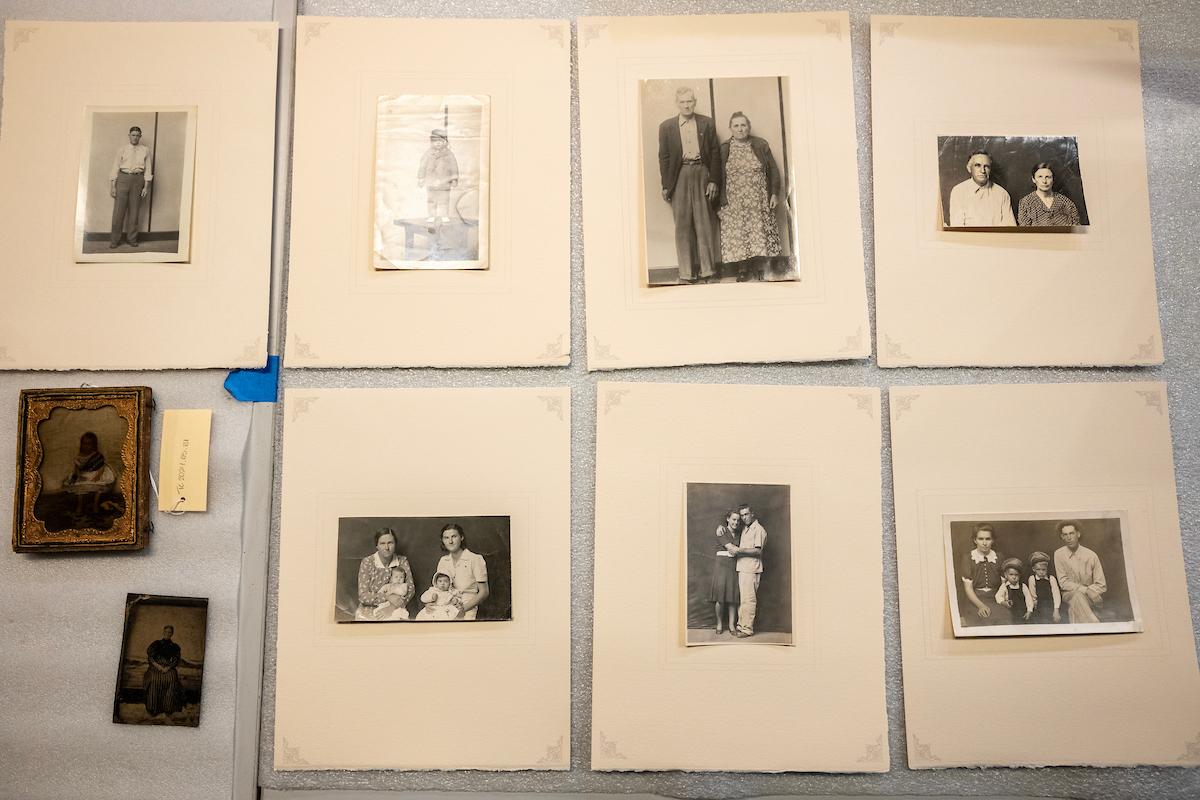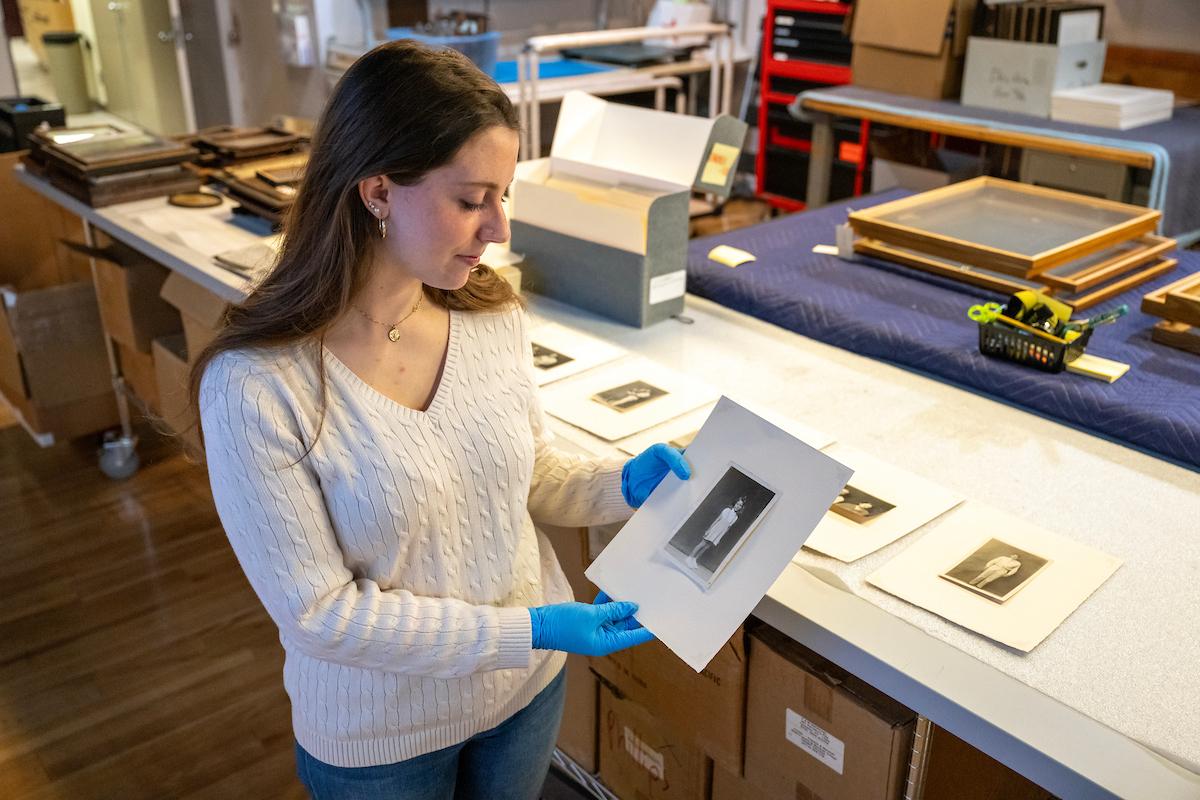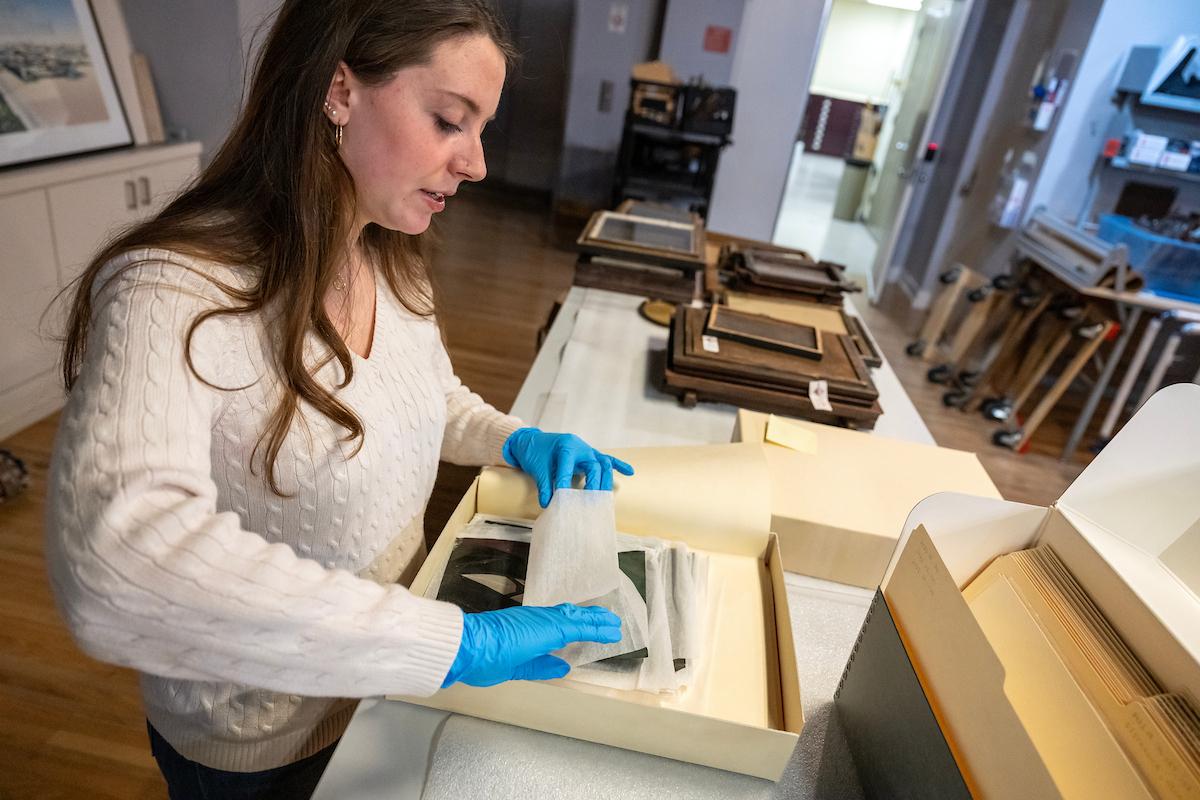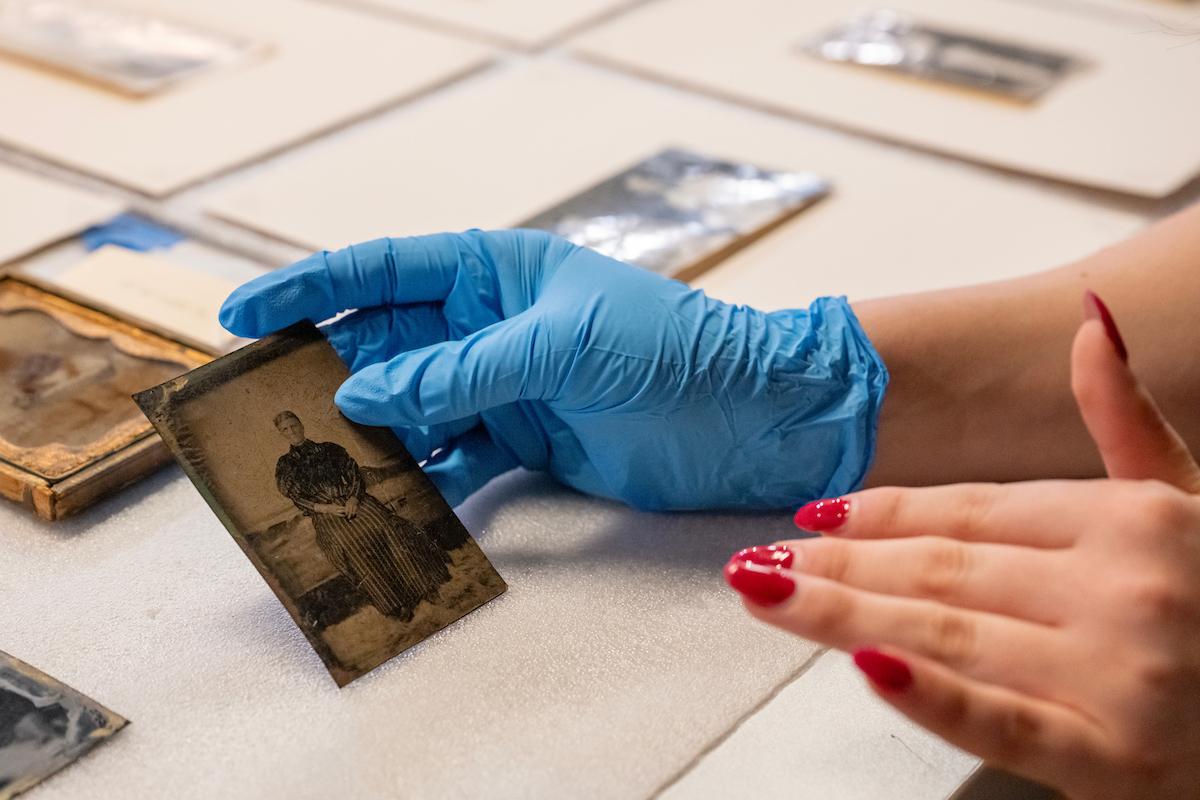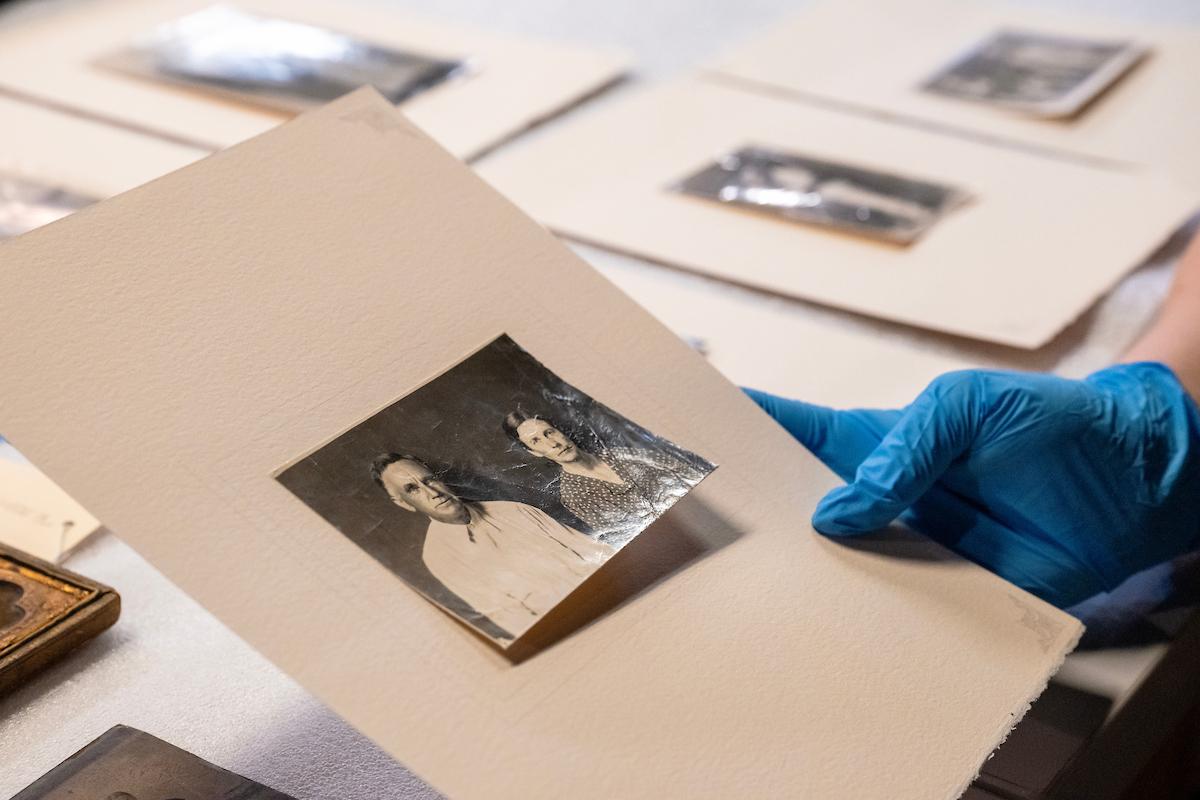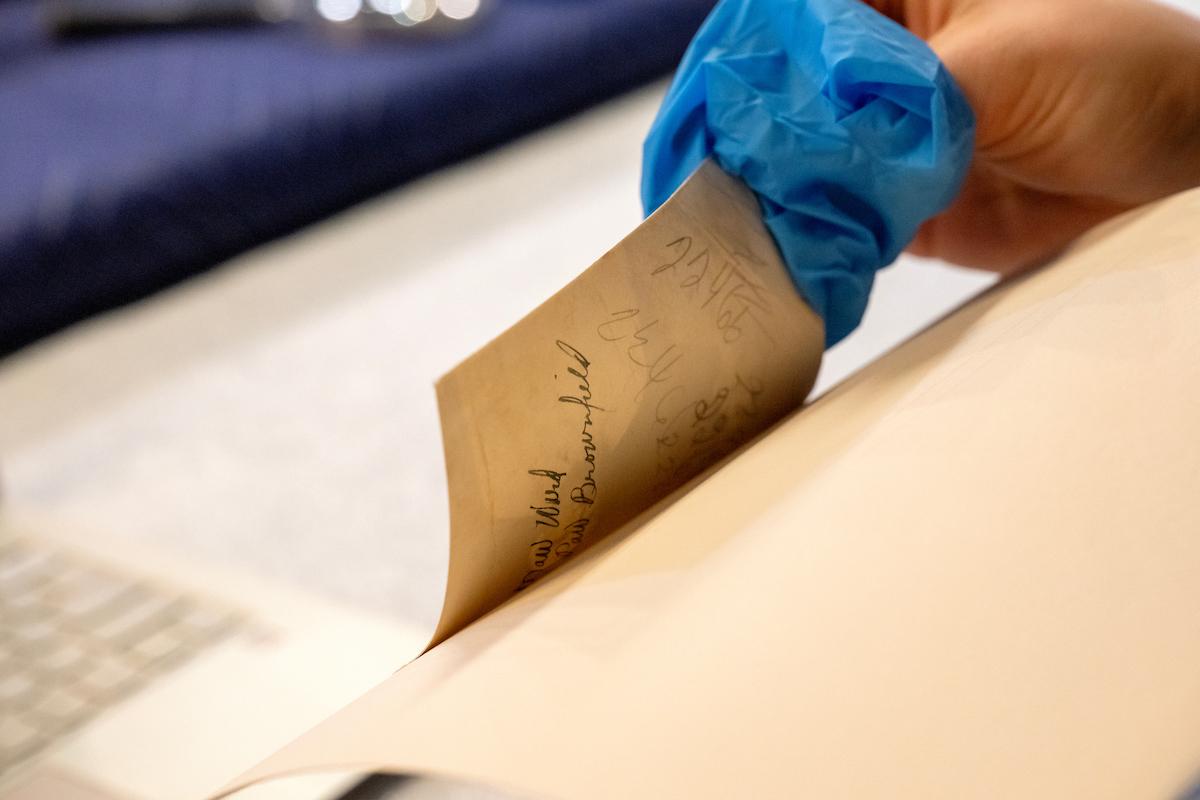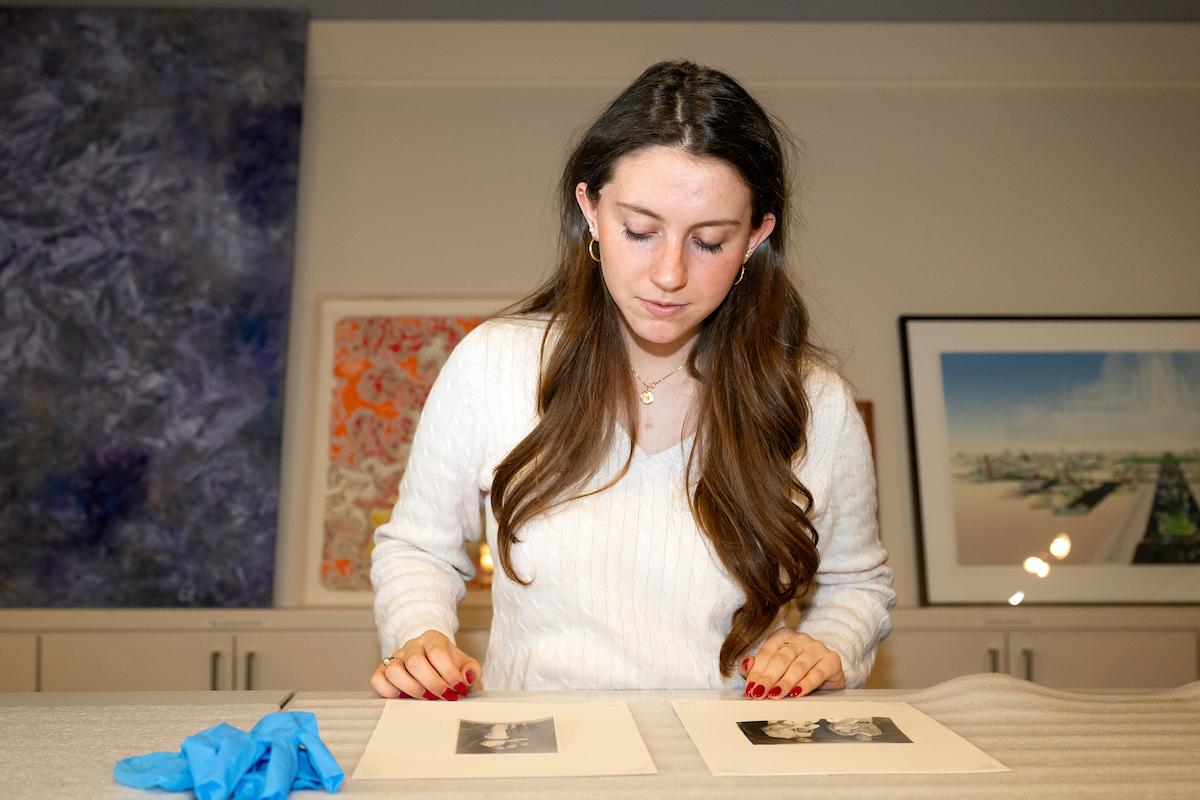F&M Stories
Art History Student Explores Portraiture Through a New Lens
Mary Wade ’25 graduates in May, and the art history and classics double major is already using the skills she learned from her faculty mentors.
Wade was interning with the Phillips Museum of Art when a particular set of photographs caught her eye. The black and white images depicted Depression-era families with a plain curtain as backdrop.
“I kept returning to them. I was really curious about them,” Wade said.
The photographs were taken by Mike Disfarmer, who took distinctive portraits of everyday people in rural Arkansas in the early 1900s. The photos are part of a collection donated to the Phillips Museum by Dr. Stephen Nicholas P’20 and his wife, Eileen P'20.
Richard Kent, professor of art history, and Lindsay Marino, the Phillips Museum director, encouraged Wade to further investigate Disfarmer’s photographs. She began her independent study by researching how portraiture evolved over time, which enabled her to examine the Disfarmer photographs more critically.
“Using my own eye, I could apply what I know about portraiture as a tradition and compare them to earlier photographs and draw out those differences,” she said.
“It’s fun to be able to develop my own ideas and thoughts beyond the forefront of
this scholarship. Being able to self-actualize with this project has been so encouraging.”
— Mary Wade '25
Wade learned at F&M that, before the photograph, portraiture was mainly available to an elite class of wealthy people. While the introduction of the tintype photographs made portraiture more accessible to middle and lower classes, early forms of photographic portraits continued to draw from elite painted traditions, she said.
“Disfarmer’s photographs struck me because they take a step back from that painted tradition,” she said. “He shifted away from using props or makeup or backdrops. He’s not trying to stage them in a particular way. People were just coming off the street and sitting for this image as they were, paying a penny or a nickel to have their picture taken.”
Working directly with primary sources helped Wade notice details about Disfarmer’s photographs she might not have seen otherwise.
“On the back, there are notes left from the original owners,” she said. “I became interested in the haptic experience of handling a photograph and how that forms emotional bonds that previous forms of art didn’t really allow. You can’t hold and handle and carry a painting with you.”
Wade’s project with the Phillips Museum will culminate in an online exhibition showcasing Disfarmer’s photographs alongside an essay detailing her findings.
“It’s fun to be able to develop my own ideas and thoughts beyond the forefront of this scholarship,” she said. “Being able to self-actualize with this project has been so encouraging.”
Wade has found a home in museums and plans to begin a career in the field.
“My main aim is to make art feel accessible and relatable to everyone,” she said. “Art is a shared culture. If you’re looking at art from a different group of people or a different time period, I think it can be important to encourage cultural connectivity and compassion.”
Mary Wade ’25 was drawn to photographs taken by Mike Disfarmer, an American photographer who took distinctive portraits of everyday people in rural Arkansas in the early 1900s. The photos are part of a collection donated to the Phillips Museum by Dr. Stephen Nicholas P’20 and his wife, Eileen.
Mary Wade ’25 was drawn to photographs taken by Mike Disfarmer, an American photographer who took distinctive portraits of everyday people in rural Arkansas in the early 1900s. The photos are part of a collection donated to the Phillips Museum by Dr. Stephen Nicholas P’20 and his wife, Eileen.
Wade began an independent study researching how portraiture evolved over time and using that information to examine Disfarmer’s photographs with a more critical eye.
Wade explained that early forms of photographic portraits drew from elite painted traditions. “This woman is on a backdrop that is painted and hung behind her and she’s in her Sunday best,” Wade said of a photograph in the Phillips Museum’s collection.
Wade was drawn to Mike Disfarmer’s photographs because they take a step back from the painted tradition. “He’s not trying to stage them in a particular way; they’re just coming off the street and sitting for this image as they were,” she said.
Working directly with a primary source helped Wade notice smaller details. “On the back, there are notes left from the original owners,” she said. “I became interested in the haptic experience of handling a photograph and how that forms emotional bonds that previous forms of art didn’t really allow. You can’t hold and handle and carry a painting with you.”
Wade has found a home in museums and plans to begin a career in the field. “My main aim is to make art feel accessible and relatable to everyone,” she said. “Art is a shared culture. If you’re looking at art from a different group of people or a different time period, I think it can be important to encourage cultural connectivity and compassion.”
Related Articles
December 16, 2025
Research Club Kickstarts Students’ Science Careers
At Franklin & Marshall, a distinctive opportunity for hands-on learning gives students the chance to participate in collaborative research as early as their second week on campus. The Nanobots Research Club meets weekly and aims to help students interested in STEM research connect with each other in a casual, drop-in setting, while learning to use computational chemistry tools
December 10, 2025
F&M Celebrates Midyear Graduates
The campus community gathered Dec. 9 for the midyear completion recognition and reception, applauding students who finished academic requirements ahead of their cohort or completed an extra term.
December 8, 2025
A Diplomat’s Deep Dive into Marine Biology
Learning by doing is part of our DNA as Diplomats. Jaeyun An ’26 dove headfirst into this philosophy, spending a semester in the turquoise waters of Turks and Caicos researching the island’s diverse marine life. “This experience gave me the confirmation that this was what I wanted to do for the rest of my life,” he said.

